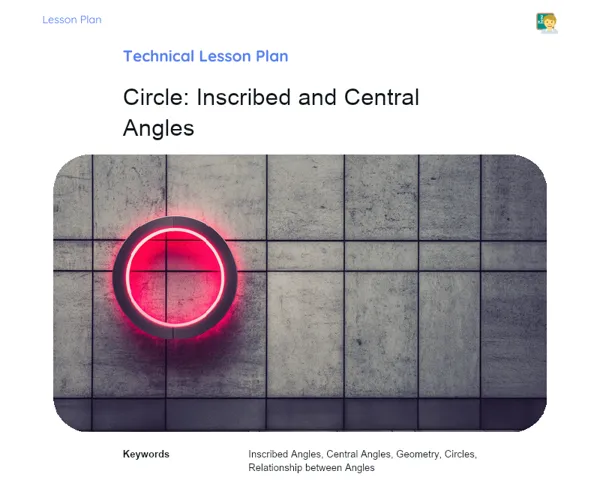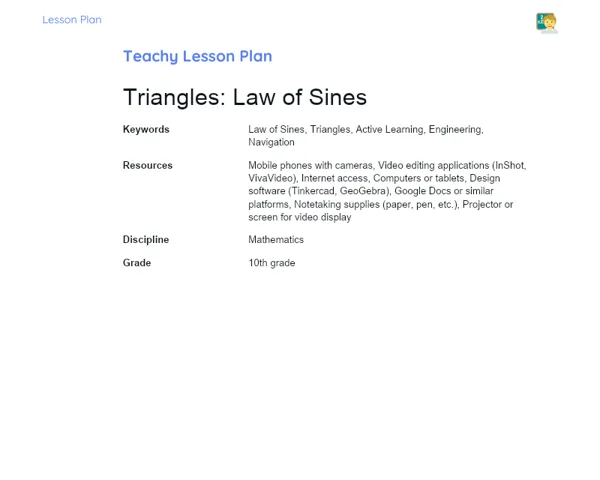Lesson Plan Teknis | Equal Parts Distribution
| Palavras Chave | Division, Equal sharing, Practical skills, Problem-solving, Teamwork, Critical thinking, Real-world applications, Mathematics in professional life, Equitable resource distribution, Collaboration |
| Materiais Necessários | Boxes with school supplies (like pencils, erasers, pens, and rulers), Short video demonstrating resource division in a professional kitchen, Whiteboard and markers, Paper for taking notes, Calculators (optional), Projector and computer for video presentation |
Objective
Duration: 10 - 15 minutes
The goal of this stage of the lesson plan is to ensure that students comprehend the significance of dividing quantities equally. This skill is not only vital for mathematics but also for practical scenarios in the workplace and daily life. By developing these practical skills, students can apply mathematical concepts in real-life situations, making their learning experience more meaningful and relevant.
Objective Utama:
1. Teach students how to equally divide various quantities.
2. Enable students to resolve practical problems involving equal distribution.
Objective Sampingan:
- Enhance logical reasoning and problem-solving abilities.
- Promote teamwork and collaboration among students during practical tasks.
Introduction
Duration: 10 - 15 minutes
The purpose of this stage of the lesson plan is to make students aware of the significance of equal distribution, a crucial skill in both academic and real-life contexts. By cultivating these skills, students learn to apply mathematical concepts to practical scenarios, facilitating a more impactful and relevant learning journey.
Curiosities and Market Connection
In the job market, the ability to fairly divide and manage resources is crucial. Professions like project managers, chefs, and engineers regularly apply these skills to allocate resources, assignments, and ingredients efficiently. Furthermore, equitable sharing is a foundational principle in fields like accounting and logistics, where ensuring each component of a system gets the proper share of resources is vital.
Contextualization
The skill of dividing quantities into equal parts is essential not just in math but also in everyday situations. For instance, think about sharing a pizza with friends or allocating tasks in a group project. These scenarios require us to know how to split things fairly so that everyone benefits equally.
Initial Activity
Thought-Provoking Question: "If you had 12 chocolates and wanted to divide them equally among 4 friends, how many chocolates would each friend get?" Short Video: Display a 3-minute video illustrating resource division in a professional kitchen, emphasizing the significance of evenly sharing ingredients to ensure the success of the recipes.
Development
Duration: 40 - 45 minutes
The aim of this stage of the lesson plan is to put theoretical division concepts into practical use, encouraging students to collaboratively solve real problems. This will enhance their critical thinking and teamwork skills, which are crucial for their academic and future professional endeavors.
Topics
1. Understanding division and equal sharing
2. Real-world applications of equal distribution
3. Problem-solving related to division
Thoughts on the Subject
Encourage students to think about how equal sharing is reflected in various everyday situations, such as distributing food, sharing chores at home or school. Discuss how they would feel if the sharing wasn't done fairly, and how it might affect collaboration and harmony in various contexts.
Mini Challenge
Equitable Sharing Challenge
Students will undertake a practical activity where they must equally divide a set quantity of school supplies among different groups.
1. Split the class into groups of 4 to 5 students.
2. Hand out a box containing assorted school supplies (like pencils, erasers, pens, and rulers) to each group, ensuring there's enough for all members to have an equal share.
3. Ask the groups to allocate the materials equally so that each student receives the same amount of each item.
4. Post-division, have the groups verify if everyone got the same amount and discuss their approach to achieving this.
5. Lead a class discussion about any challenges they faced during the division and how they overcame these obstacles.
Cultivate practical division skills while promoting teamwork and cooperation.
**Duration: 25 - 30 minutes
Evaluation Exercises
1. Divide 24 candies evenly among 6 children. How many candies does each child get?
2. If you have 15 apples and want to share them equally with 3 friends, how many apples does each receive?
3. A teacher has 36 pencils and wants to distribute them equally among 9 students. How many pencils will each student receive?
4. Divide 120 oranges among 3 people, ensuring each gets an equal share. How many oranges does each person end up with?
5. You have 50 stickers to share with 5 friends. How many stickers does each one get?
Conclusion
Duration: 10 - 15 minutes
The goal of this concluding stage of the lesson plan is to solidify the students' learning by stressing the significance of equal division both theoretically and practically. By reflecting on the activities and discussing their applications, students will reinforce their understanding and appreciate the relevance of the skills they've gained in diverse contexts.
Discussion
Lead an open forum discussing the activities conducted throughout the lesson. Invite students to share difficulties faced during the Equitable Sharing Challenge and how they managed to resolve them. Encourage reflection on the importance of equitable division in various contexts such as at home, in school, and in the workplace. Discuss how effective division skills can be leveraged in various careers and daily scenarios.
Summary
Summarize the key points addressed in the lesson, reiterating the concepts of division and equal sharing along with their practical implications. Review the fixation exercises and discuss the solutions, reinforcing the methods for equitable division.
Closing
Wrap up the lesson by emphasizing the importance of the ability to divide quantities equally. Highlight that this skill is vital not only in mathematics but also in day-to-day life and in the professional realm. Stress that the competence to distribute resources fairly and effectively is a valuable asset in numerous fields like culinary arts, project management, and logistics.


